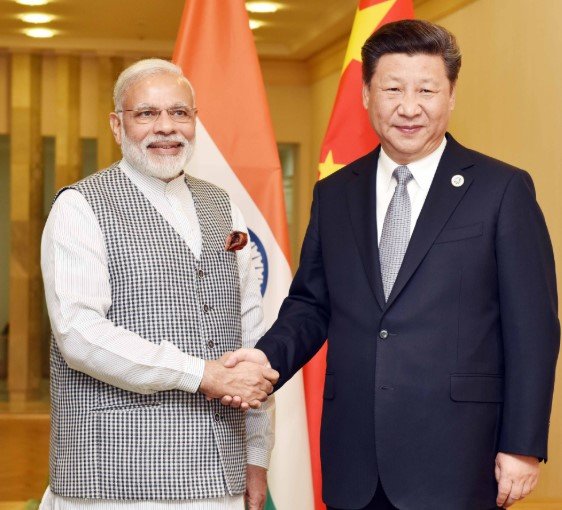PM Could Meet Xi Jinping at SCO Summit in Tianjin, His First Visit Since 2018
Prime Minister Narendra Modi is expected to travel to China later this month to attend the Shanghai Cooperation Organisation (SCO) summit — a visit that could recalibrate India’s diplomatic posture just as its trade war with the United States intensifies.
If confirmed, this would mark Modi’s first trip to China in seven years and comes at a particularly charged moment globally. The SCO summit is scheduled in Tianjin from August 31 to September 1, and officials say preparations are already in motion to finalize the visit.
A Visit With Heavy Luggage: Border History and Global Tensions
Modi and Chinese President Xi Jinping haven’t met face-to-face since October 2024, when both leaders briefly interacted during the BRICS summit in Kazan, Russia. That meet quietly set the wheels in motion for troop disengagement at two standoff points along the Line of Actual Control (LAC) in eastern Ladakh.
That process, long overdue, was completed in November 2024 — nearly five years after the deadly Galwan clash in 2020.
Now, as the two leaders prepare for another meeting, the baggage is heavier than ever. There’s still no full restoration of trust between New Delhi and Beijing, but both capitals seem interested in at least managing their differences.

Why Tianjin Matters More Than Ever
It’s not just about SCO. It’s about timing.
This summit happens while:
-
U.S.–India relations have soured following Trump’s 50% tariff move over Russian oil imports.
-
India continues deepening energy ties with Moscow.
-
China eyes opportunities to exploit the growing wedge between Washington and New Delhi.
Sources familiar with the planning say a one-on-one meeting between Modi and Xi is “very likely” on the summit sidelines.
“There’s strategic messaging here,” said a former Indian envoy to Beijing. “If Modi lands in Tianjin, sits with Xi, and talks trade or security, it tells Washington that New Delhi won’t be bullied into isolation.”
India’s Foreign Policy Balancing Act
Modi’s foreign policy team is walking a tightrope. On one side, they’re fending off American criticism for importing discounted Russian crude. On the other, they’re trying not to drift too far into Beijing’s sphere of influence.
India’s participation in the SCO, a China-led bloc, has always raised eyebrows in Washington. But for New Delhi, it’s about access—access to Central Asia, energy corridors, and regional forums that sidestep Western dominance.
That’s why the optics of this trip matter just as much as the outcomes.
From Galwan to Gentle Nods?
The shadow of Galwan still looms.
The military standoff in 2020 shattered the fragile peace along the Himalayan frontier. Twenty Indian soldiers died in hand-to-hand combat with Chinese troops, marking the bloodiest border clash in over four decades.
Since then:
-
20 rounds of Corps Commander-level talks have been held.
-
Four key disengagement points have been cleared.
-
Patrolling rights have not yet been fully restored.
The October 2024 Kazan interaction between Modi and Xi helped speed up disengagement. But mutual suspicion remains thick.
“There’s no love lost,” said a senior Indian Army officer involved in the diplomatic-military dialogue. “But neither side wants war. That’s something.”
What Might Modi and Xi Discuss?
The bilateral agenda isn’t public yet. But sources say the key topics could include:
-
Border de-escalation: Patrolling protocols and confidence-building measures.
-
Trade normalization: Despite tensions, India-China bilateral trade hit $136 billion in 2024.
-
BRI friction: India remains the only major SCO member to reject China’s Belt and Road Initiative.
-
Regional security: Afghanistan, terrorism, and maritime cooperation.
Here’s a table outlining potential discussion points:
| Topic | India’s Position | China’s Likely Stance |
|---|---|---|
| LAC Patrol Resumption | Wants clear protocols, mutual pullbacks | Prefers status quo; wary of India’s demand |
| BRI | Strongly opposed due to CPEC | Will push for endorsement |
| Trade Sanctions | Wants easing of barriers | May negotiate sectoral openings |
| Indo-Pacific Security | Supports Quad, freedom of navigation | Opposes U.S.-led Indo-Pacific alliances |
Politics, Optics, and the 2026 Election
Let’s not forget the domestic angle.
Modi is heading into a potentially turbulent election year in 2026. Any sign of international statesmanship or diplomatic success can bolster his already towering image at home. A handshake with Xi — especially after years of post-Galwan silence — would be headline material.
At the same time, opposition leaders are likely to raise flags about shaking hands with China too soon, too easily.
One Congress MP called the potential visit “an insult to our fallen soldiers.” But Modi’s camp insists dialogue is not weakness—it’s strategy.
SCO’s New Chapter?
The SCO summit will also mark the entry of Belarus as a full member, bringing the bloc’s total to 10. And with Afghanistan’s status still in limbo, discussions are likely to center on regional stability.
Modi’s participation also sends a signal to Central Asian nations like Uzbekistan and Kazakhstan, which are watching India’s next move closely.
In many ways, India is the wildcard in this bloc—a democracy surrounded by authoritarian neighbors. But it’s also the most economically promising member after China.
